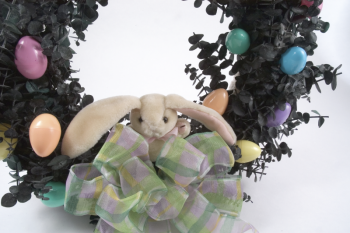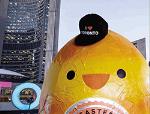 By Sean Delaney
By Sean DelaneyAsk a child about it, and Easter is about a generous bunny, and a basket full of eggs.
But it is one of the most important dates on the Christian calendar, and an important event for all faithful and believers of Jesus Christ.
Easter is a holiday that marks the resurrection of Jesus. Crucified at Calvary by the Romans, Jesus is said to have resurrected three days later.
Many faithful will also mark Easter with the following of Lent, a 40 day long period of fasting, prayer and penance.
And Easter has never really been a one day celebration.
The holiday has a number of different evolutions. But the religious tradition of it has rarely changed, if not adapted.
The fasting of Lent culminates in the Holy Week. Holy Thursday marks the Last Supper, the meal Jesus shared with his Apostles in Jerusalem before the day of his crucifixion.
Good Friday marks the death of Jesus and his crucifixion.
Many may wonder then why Easter moves dates?
Well, the council of Nicea (325 AD) established it as a movable feast on the calendar as the first Sunday after the equinox.
Probably tied to harvest celebrations as well in other cultures, it became a movable date between the end of March and the end of April.
Now, how did we get the bunny?
Well, in Christian tradition, the Easter Egg represented the empty tomb of Jesus. And the egg itself was a symbol of fertility and rebirth. A perfect symbol for the celebration as the emergence of a bird from an egg was also a perfect representation of Jesus’ resurrection to early Christians. Painted eggs became traditional gifts, and in modern times the painted egg became substituted with treats for children. Along came chocolate eggs, and fake shells filled with candy.
One just has to wonder how many dads and moms broke their eggs and made a mess before they decided to substitute in a treat the child could just eat.
The Bunny became a character or symbol for the holiday, much like Santa Claus did for Christmas. In Germany, Lutherans were said to believe he would act as the decision maker on whether children were good or bad. Good children received colourful baskets of painted eggs.
He was first depicted as the Easter Hare, and imagined carrying colourful baskets of treats for children. It’s said that German immigrants brought the idea to North America in the 18th century.
The bunny itself has a history in early Christianity that is used to explain it becoming the main symbol. Early religious artwork often featured the hare, and the belief that a hare may be a hermaphroditic reproducer, able to bear children without losing its virginity, associated it closely with the Virgin Mary.
Easter is important across the globe, as it is also one of the more important dates in Eastern and Oriental orthodox churches.
But here at home, it has evolved into one of those holidays in which we get to cherish our beliefs, our family, and our loved ones.
Chocolate and cute bunnies on top of all that? This is quickly becoming one of my favourite holidays.
Share your Easter stories or memories with the Emery Village Voice by emailing:













